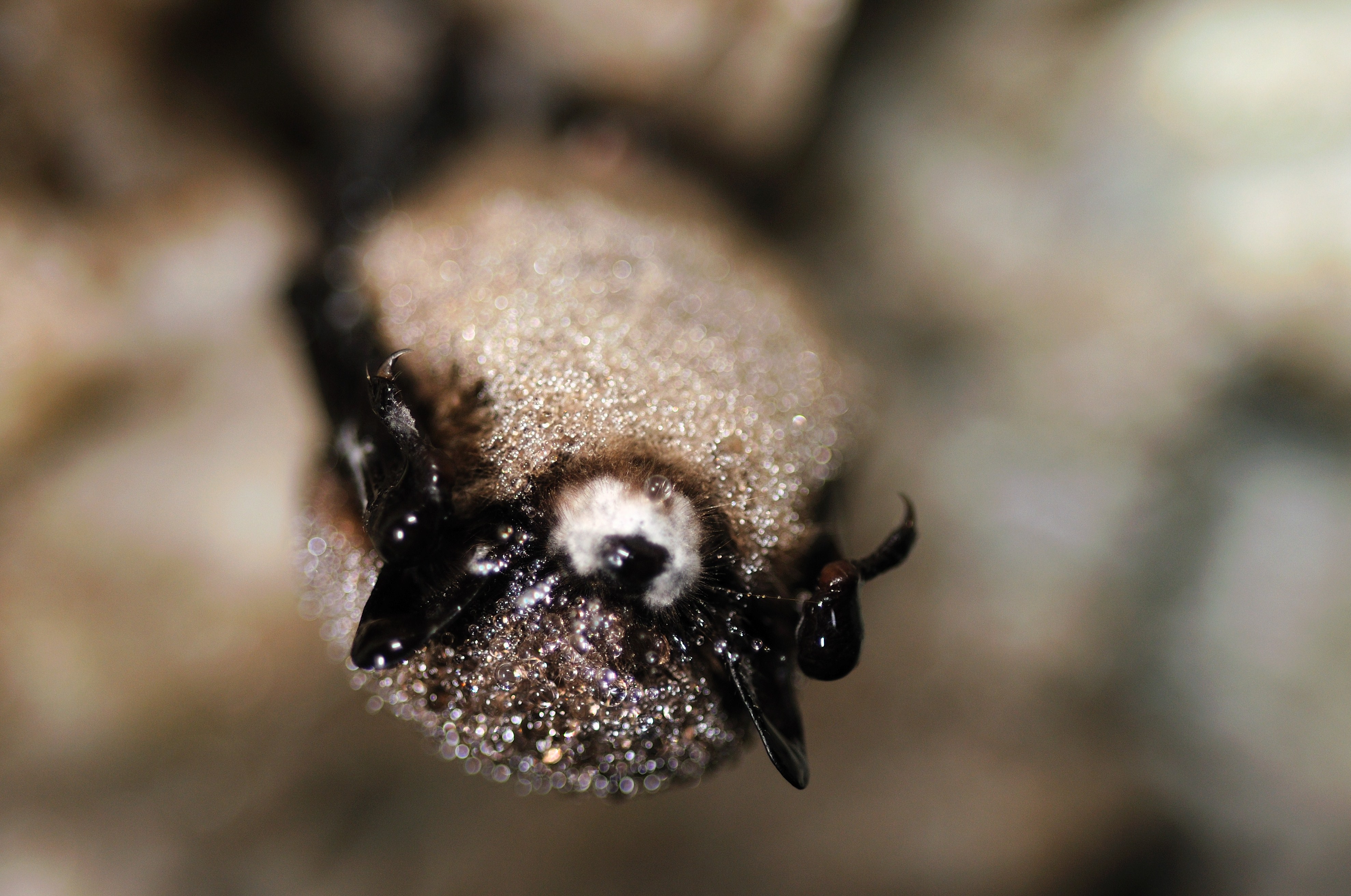White-Nose Syndrome

White-nose syndrome also referred to as WNS, is a fungal infection that afflicts hibernating, inactive bats. It is caused by the fungus known as Pseudogymnoas destructans (PD) and it is recognized as a white fuzz that is growing on the snouts and faces of certain bat species (hence how it got its’ name). It will grow on the bare skin of their faces when they are in hibernation because they are inactive, and this allows for the fungus to take hold. It changes the way that bats behave, and it will make them active during times when they, naturally, shouldn’t be. This unnatural behavior will cause them to burn up the fat stores they have built up in order to survive hibernation and if they use those stores up too soon, they can die.
An Epidemic For Bat Populations
It has destroyed bat populations in North America, some sites have seen a mortality rate between 90 and 100% of the bats. The species who seem to be feeling the worst effects of this infection are the northern long-eared bat, the little brown bat, and the tri-colored (or eastern Pipistrelle) bat. There are other species who have been seen with this infection, but they are not facing the illness and mortality rates of the three listed here.
It has been found in bats of Europe and Asia, but this infection is not as destructive to the populations on these continents as it is to those in North America. It was unknown to scientists until the recent past.
Where did it come from?
Cave explorers first took pictures of bats in 2006 in upstate New York that had the white fuzz growing on their faces. It was first seen by scientists in 2007 in caves near Albany, NY. They found sick and dying bats as a result of white-nose syndrome. It is not exactly known where it comes from, but it is suspected that people are to blame for this problem.
The fungus grows in cold, damp caves and the spores are able to survive a long time on the clothes and outdoor equipment of people. People most likely carried the fungus into the habitats of these bats and the fungus was able to take hold easily. It has been found that people are not able to contract the illness, but they are likely to be the catalyst that caused the epidemic.
What is being done?
This fungus is spreading quickly amongst the bat populations of the United States and Canada. The rapid spreading can be contributed to bat to bat contact but this fungus can occur in nature so it is possible that they get it from the environment. The bat to bat contact is the reason by it is spreading so fast.
Scientists are working diligently across the globe in order to learn as much as they can about this fungus. They are working so hard so that they can save these animals who serve such an important purpose for the world ecosystems. They are exploring possible vaccines and habitat alternations that may help in reducing the spread.

